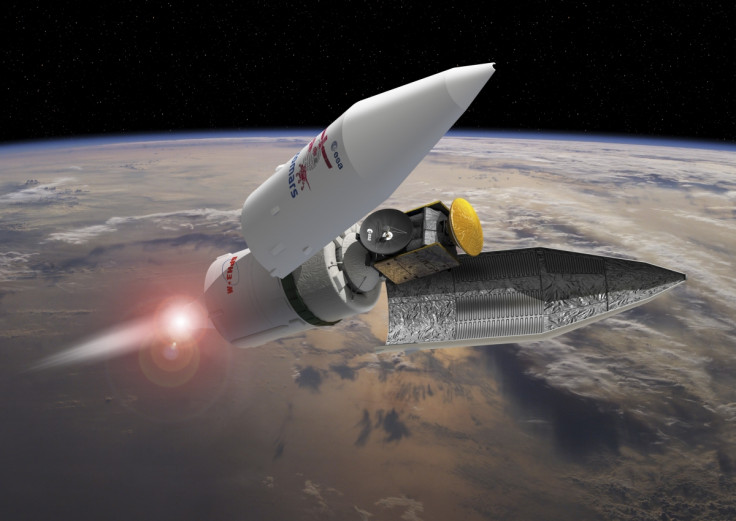ExoMars 2016: ESA mission seeks evidence of life on Mars

The European Space Agency is due to launch a mission to Mars on Monday 14 March. In partnership with Russia's Federal Space Agency, this will be the ESA's first mission to the red planet since the Beagle-2 mission in 2003.
The mission, known as "Exobiology on Mars" – or ExoMars – is to find gases in the planet's atmosphere which indicate life can exist. This is the first of a two-stage mission, which is due to end at some point in the early 2020s. The second part of the mission begins in two years' time, in 2018.
The mission launches from the Baikonur Cosmodrome in Kazakhstan on 14 March. The project was first discussed in 2005, but it was not until 2009 that dates for the mission were officially agreed.
Searching for life
The idea is to examine the atmosphere on Mars. More precisely, scientists plan to investigate if Mars has traces of methane in its air.
Methane breaks down in sunlight within a few hundred years, so if any is identified in the atmosphere, researchers will know it would have had to come from somewhere relatively recently. That "somewhere" could either be from volcanoes, or living microorganisms.
"Investigations with observatories in space and on Earth have demonstrated the presence of small amounts of methane in the Martian atmosphere that has been shown to vary with location and time," the ESA website says.
"Since methane is short-lived on geological time scales, its presence implies the existence of an active, current source of methane. It is not clear, yet, whether the nature of that source is biological or chemical."
The mission will use a Trace Gas Orbiter to analyse Mars' atmosphere. This orbiter will do exactly that – orbit – approximately 400km above the surface of the Red Planet.

When it reaches this distance, it will begin to use its unique measuring tools to analyse the atmosphere. It will then deliver the data back to Earth, detailing the percentage of methane, water vapour, nitrogen oxides and acetylene – all trace gases.
The orbiter will also tell the scientists if any sulphur dioxide is present in the atmosphere. This is the key to uncovering what the source of the methane is (if there's any at all, of course). Sulphur dioxide implies that the methane is from a chemical source – such as volcanoes.
Likewise, a hint of the isotope carbon-12 will imply that the methane originated from something living – just like here, on Earth.
"Detecting methane by itself doesn't tell you whether it is produced biologically or geologically – you need to look at the whole suite of atmospheric behaviour," said Bruce Jakosky from Nasa. "That would be considered the home run for TGO (Trace Gas Orbiter), to define the source of methane."
ExoMars rover
The Trace Gas Orbiter will also help astrobiologists in a second way – preparing for the ExoMars rover in two years' time. This robot has six legs, and can roam the surface of the red planet in search of life.
Previous attempts at landing on Mars have had mixed fortunes. For example, the Beagle-2 lander was sent to Mars in 2003, but never responded when scientists tried to communicate with it.
Therefore, a practice run will be attempted by astronomers at the ESA. The TGO will deploy Schiaparelli – an entry, descent and landing demonstrator module – on 16 October 2016. This module will act just like a Mars rover would, plummeting towards Mars' surface at 21,000kmph (13,000mph).

Should Schiaparelli land safely, that means the ExoMars rover should land equally as well.
However, this module is not just a robotic guinea pig. If the TGO manages to capture a source of methane, the module can roam about the surface of the planet – just like the Mars Rover, albeit for nowhere near as long.
"If there are genuine sources of interesting gases discovered, it will be down to those rovers to hopefully get near them, or characterise environments that are potentially like them," Nicholas Heavens, from Hampton University, told New Scientist.
Results
Although the TGO is being fired into space on 14 March 2016, it will not begin to relay results to Earth until December 2017. As it will be travelling so fast, it will need nearly 12 months to slow down enough that it does not keep going – and crash on the surface of Mars.
The TGO will work for five years, helping scientists at the ESA uncover the amount of methane in the atmosphere, as well as potentially its source. This information, in turn, will be used by the ExoMars rover, when the time comes in 2018.
© Copyright IBTimes 2024. All rights reserved.






